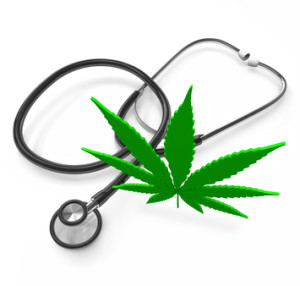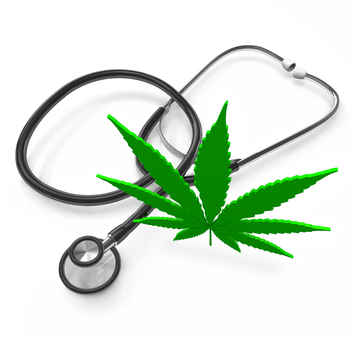
At the 249th annual meeting of the American Chemical Society, Andy LaFrate, the president and director of research of Charas Scientific presented the results his lab found on its analysis of marijuana. Average potencies are around 20% THC. He said that they have seen potency values approaching 30% THC. “As far as potency goes, it’s been surprising how strong a lot of the marijuana is.” But an unexpected consequence of that breeding for higher THC potency has been the lowering of CBD levels in many marijuana strains. CBD is the cannabinoid often touted for its therapeutic value. And unlike THC, CBD does not get people high.
There’s a lot of homogeneity whether you’re talking medical or retail level . . . One plant might have green leaves and another purple, and the absolute amount of cannabinoids might change, which relates to strength. But the ratio of THC to CBD to other cannabinoids isn’t changing a whole lot.
LaFrate said in a video, “Marijuana Testing Yields Fascinating Results,” that a lot of the time the CBD concentration is very low, sometimes too low for their equipment to detect. The lack of CBD means that many of the hundreds of strains of marijuana actually are very similar, chemically. A lot of the medicinal benefits attributed to THC are actually from CBD, one of the 85 different cannabinoids that can be isolated from cannabis. Some of the most well known ones with known or presumed medicinal properties are reviewed in this crash course, Cannabinoid Profiles , by SC Laboratories and Weedmaps. The video makes the potential for medical marijuana sound exciting and almost limitless. But one thing seemed to be said over and over again—more research needs to be done.
LaFrate also looked for biological and chemical contaminants in the marijuana they tested and the results were surprising. “You’ll see a marijuana bud that looks beautiful. And then we run it through a biological assay, and we see that it’s covered in fungi.” He was startled to find just how dirty a lot of it was. Marijuana is a natural product, so there will be some microbial growth on it, said LaFrate. So the questions become: What’s a safe threshold? And which contaminants do we need to be concerned about?
Contaminant testing is not mandatory yet, but should be soon in Colorado. LaFrate noted that many samples had fungi or bacteria. Some marijuana products tested have butane, used to strip and concentrate THC from the plant. Other samples had heavy metals. He added that when you’re dealing with something like marijuana that’s been under prohibition for the last eighty years, scientific testing gives the consumer confidence that this is something that is safe. It seems that the state-by-state approval strategy of medical marijuana dating back to California has contributed to this issue with contaminants.
Not only can there be purity and contaminant concerns with cannabis, but the majority of the available varieties of cannabis are high in THC, the primary psychoactive ingredient, and low in CBD, the primary medicinal ingredient. Weedmaps provides a graphic of the eight known cannabinoids “that effect you most” with information on the claimed medicinal properties of the eight cannabinoids. A quick look shows that THC, “the most abundant and widely known” cannabinoid in marijuana has limited medicinal properties: it is an analgesic, it reduces vomiting and nausea, it suppresses muscle spasms and it is an appetite stimulant. The only medicinal property unique to THC in the chart is its appetite stimulant properties.
In contrast, cannabidiol (CBD) “may hold the most promise for many serious conditions.” And it’s the second most common in marijuana. In the CBD video found in Cannabinoid Profiles, Josh Wurzer, the Laboratory Director for SC Laboratories said when SC Laboratories began testing marijuana strains a few years ago, most plants were high in THC, typically 10% to 20%, with 1 to 1½ percent CBD. Now they are seeing strains with between 8 and 15 percent CBD and a concurrent 5 or 6 percent of THC. The higher CBD content occurs through the activation of a recessive gene in the cannabis plants. Wurzer said cannabis breeders have to find plants with the high CBD gene locked away and breed them. “The only way you can know if it is high in CBD is to test it.”
There was an experiment at the Institute of Psychiatry at Kings College, London, that looked at the relationship of the effects of the two main ingredients in cannabis, THC and CBD. You can see a video of a reporter participating in the experiment here. Her mixture of THC and CBD left her with the giggles: “No matter how hard I tried to take the experiment seriously, it all seems hilarious.” But with pure THC, it was a different story. “It’s horrible. It’s like being at a funeral . . . Worse . . . It’s just so depressing. You want to top [kill] yourself.”
On THC and CBD mixture, she said she seemed flippant; on pure THC, she just didn’t care. With pure THC, she was suspicious, introverted; “weird.” Every question seemed to have a double meaning. She felt morbid. “It’s like a panic attack.” The researchers used the Positive and Negative Syndrome Scale (PNASS), a standard test to measure changes in psychotic symptoms. On the PNASS sub scale used, changes above four was clinically significant; what would be associated with schizophrenic psychosis. She scored fourteen. The effects were temporary.
The suggestion is that high levels of THC “can play havoc with your mind.” Individuals with no history of mental illness and no predisposition to schizophrenia don’t seem to be at long-term risk of THC triggering this reaction. But is seems that CBD has a counteractive effect on the paranoid and psychotic effects of THC. Here is a link to several studies on the positive effects of CBD on schizophrenia found on Project CBD.
There is also an SC Lab/Weedmaps video on the problem with overmedicating with cannabis. The pro medicinal marijuana panel noted that there is a tendency to overmedicate because of the largely nontoxic effects of cannabis. “It’s really safe to take a large dose. And you don’t get a lot of hangovers.” But you do get psychotoxicity (perceived harm). Bonni Goldstein, MD, the CannaCenters Medical Director said she recommends a process of titrating up—starting with a low dose and waiting to see what the effects are before you add more.
A second panel member, Mike Corral, the co-founder and agricultural Director of W.A.M.M (WO/Men’s Alliance for Medical Marijuana), said that in talking to researchers, medically effective doses are measured in micrograms; a gram should medically last as much as a week. “Invariably, we see people smoking, three, four, five, six, seven grams a day. We come from a stoner culture.” He said that he had no problem with people getting stoned, but that wasn’t medical use. He also thought there should be full legalization to separate the recreational and medicinal users.
Another panel member, Michael Backes, the Founder/Director of Cornerstone Research Collective, said: “Just because something has a drug safety profile that’s favorable, like cannabis does, doesn’t mean there aren’t potentially some issues.” He noted that one of things they learned from a cannabis pain study is that there was a “sweet spot” of dosage for cannabis, “and you don’t want to go past it.” The graphic within the video read: “Just as a patient who underdoses, one who overdoses will not have their symptoms relieved, therefore exceeding the ‘sweetspot’ is a waste of medicine.”
He said people have to respect their dose more. You could use cannabis in an overdosage for years, with little changes that you don’t notice, because they accumulate over time. Although cannabis is a very nontoxic substance, it is pharmacologically active, “and you’ve got to respect it.” He noted that 10% of individuals will develop a dependency issue, and then he wondered how you counsel people who you know are doing too much. “And how do you convince them “Hey, it’s time to back off?’”
Marijuana legalization continues to move forward on a state-by-state basis, which creates problems in a number of ways. As the above information pointed out, there is not a good system of quality control and contaminant testing available yet, even in Colorado. The majority of marijuana strains available, including those for medical marijuana, appear to be high in THC (the primary psychoactive cannabinoid) and lower in CBD (the primary medicinal cannabinoid). Current dosing practices, according to a panel of pro-medical cannabis individuals, are too high for medicinal purposes and could over time, lead to health problems like “dependency issues.” A cannabis strain high in THC and low in CBD could trigger symptoms associated with schizophrenia.
Before marijuana is legalized in more states, it seems advisable to make some federal changes. First, marijuana should be reclassified as a Schedule II controlled substance. This would make the desperately needed research on the medicinal properties of cannabis easier to do. Second would be to appropriate more funds into medical marijuana research. Third would be to fund the development of marijuana strains that are much higher in CBD and lower in THC. Fourth would be using the established process of clinical trials with the FDA for confirming treatment possibilities for cannabinoids.
Legalization polls (see this Pew Research Center poll) that distinguish recreational marijuana use from medicinal marijuana use show that more Americans in favor of legalization fall into the medicinal camp. These suggestions would be consistent with the poll’s findings. Legalizing medical marijuana without these steps puts us back to the days of patent medicine. Medical marijuana should be treated like all other substances proposed as medicinal treatments for humans. Let’s not make the mistake of treating marijuana as a special case that doesn’t need to go through the same approval process for all other proposed medical treatments.





